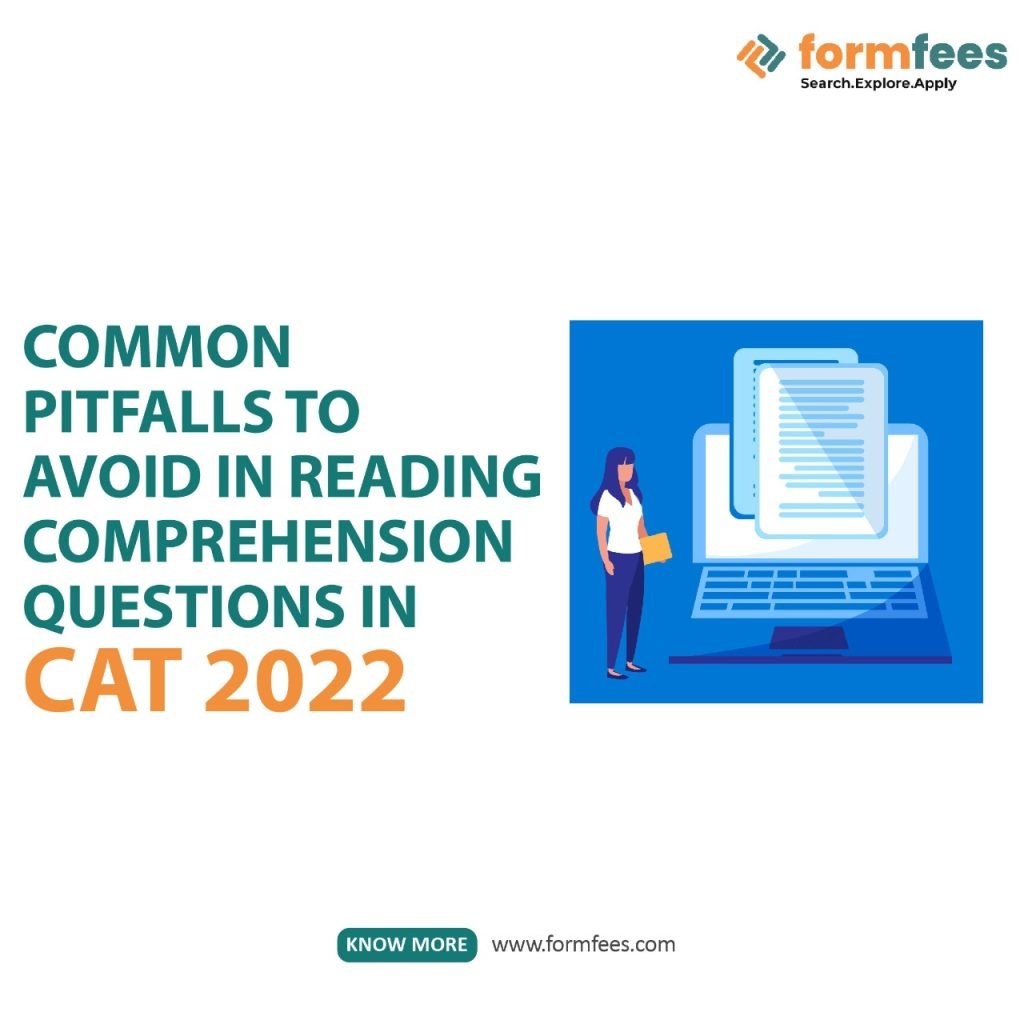Indian Institutes of Management are one of India's most prestigious national institutes dedicated to teaching and researching management. Postgraduates, doctoral students, and executives are most likely to pursue education at IIMs. There are two-year post-graduate programmes at the IIMs. It is a residential program lasting two years. The Fellow Program in Management (FPM) is equivalent to a PhD program in management, taking place on a full-time basis. Working professionals are the target audience for the Executive Postgraduate programmes.
Applicants to the two-year post-graduate programmes in IIMs are screened through a rigorous selection process that involves a Personal Interview, Written Ability Test/Group Discussions, and scores in the Common Admission Test, or CAT. An IIM conducts the CAT to evaluate and select candidates for its postgraduate programs. An applicant must register for this exam, which is computer-based, to appear for it.
In CAT, IIM Ahmedabad introduced three sections. IIM-A also introduced 32 questions in one section & 34 in the other two sections in 2015. Since 2015, the distribution of the questions has remained the same.
Previously, there were only two sections with 50 questions each in CAT.
Candidates can also expect some changes in the CAT exam pattern as a result of the current pandemic situation.
Due to COVID-19, CAT 2020 exam questions were trimmed to 76 from 100 to fit the new exam pattern. The IIM-A, which has a reputation for making major modifications to the exam pattern, will conduct the CAT exam this year. The exam pattern is thus expected to change in a positive way for candidates.
CAT test duration was also reduced from 180 minutes to 120 minutes, which is likely to return for CAT 2021 (final notification is awaited).
The CAT consists of three sections: Quantitative Aptitude (QA), Verbal Ability & Reading Comprehension (VARC), and Data Interpretation & Logical Reasoning (DI & LR).
Jumbled sentences, para-completion, odd sentences, and reading comprehension are part of the CAT Verbal Ability and Reading Comprehension syllabus. A total of 34 questions will be asked from CAT Reading Comprehension. Preparation for CAT VARC should emphasize vocabulary, grammar, verbal reasoning, and reading comprehension.
In addition, to fill in the blanks and errors in tenses, the CAT VARC syllabus also includes vocabulary and grammar questions that can only be answered by having a good vocabulary. There is a time limit of 60 minutes for this section of the CAT Exam.
This section consists of
- Synonyms Antonyms (Vocabulary Based)
- Grammar or English Usage
- Correction in Sentence
- Fill in the blanks
- Jumbled Paragraph and Close Passage
- Analogies and Reverse Analogies
- Meaning/Usage Match
- Verbal Reasoning
- Summary Questions
- Reading Comprehension
- Facts Inferences Judgements
Reading Comprehension passages are included in the Verbal and Reading Comprehension sections. By practising RC passages thoroughly, students will be able to better understand long and complex texts.
The form and content of passages are analyzed in Verbal Reasoning questions. Candidate responses to these questions can sometimes surprise them. Under Verbal Ability, the previous years' paper contained the following types of questions:
- Five passage-based questions (3 passages with six questions each, and 2 passages with three questions each)
- Questions based on a summary (3 questions)
- Order of questions (4 questions)
- The odd-sentence out (3 questions)
CAT 2020 allows 24 RC questions out of 34 VARC questions, while CAT 2019 allows 18 out of 26 VARC questions. Reading Comprehension questions are generally weighted at 70% of the total number of questions. We can see from the RC questions that 2-3 of them are moderate-difficult and 10–12 are easy-moderate. A candidate should be aware that there is a variation in how easy and how difficult the passages are. Oftentimes, when passages appear complex, the questions following them are simple and manageable. The passage seems easy enough to read, but the questions about it may be confusing. In other words, when reading the passage as well as when reading the questions, one should be very scrupulous. The following is a brief analysis of trends in the RC section of the previous year's CAT papers:
- There will be an average of 18-24 RC questions
- If a candidate answers a question correctly, he or she will receive 3 marks, and if they answer incorrectly, 1 mark will be deducted.
- A minimum of four lengthy passages and one or two short passages are expected. There will be approximately 800 words in the lengthy passages. The short passage (approximately 500 words) should be no longer than 100 words.
- The topics will be mostly based on politics, sports, psychology, economics, literature, mythology, and abstract concepts.
Reading Comprehension is the most important topic on the CAT. As well as having the highest sectional weight, it is also the most weighted section on the CAT exam. In Section-1 of the CAT exam, there are 34 questions divided into MCQs and Non-MCQs relating to Verbal Ability & Reading Comprehension (VARC). Among the 24 questions, 70% of the weight is assigned to Reading Comprehension passages, while 30% is assigned to topics related to Verbal Ability. Roughly 24% of the CAT exam weight is assigned to RC questions.
Before this change, VA, RC, and LR were combined in the CAT reading comprehension test, but now they have been separated so one can focus on solving in just a verbal manner. As much as 70% of the CAT exam consists of Reading Comprehension Questions and Answers, the Reading Comprehension test for CAT is crucial. You should improve your reading comprehension for CAT questions, because, if you do well on the RC for CAT, you will also do well on other related questions like Para-jumbles and Para-completion.
RC passage questions require five basic skills to be answered correctly:
- Knowing the meaning of words requires a good vocabulary
- Knowing and understanding the meaning of a word relevant to the context of a Reading Comprehension passage
- Understanding the way the RC passage is organized and identifying the references and antecedents
- Achieving an understanding and identifying the Main Idea (Centrist) in RC passages and drawing inferences from RC passages
- Understand the Reading Comprehension Questions and recognize the directly or indirectly used answer in the RC passage after identifying the Tone, Situation, Mood, and Purpose of the passage
These Reading Comprehension (RC) Passages with Questions test not only your English Language skills but also your knowledge of vocabulary, accuracy and flow of thought in deriving inferences, as well as your ability to connect ideas expressed in Reading Comprehension passages when you check the Reading Comprehension Passages with Questions.
There are also online Reading Comprehension Practice Tests, along with hard copy Comprehension Passages. You can use Comprehension Passages with solutions or Reading Comprehension exercises with answers to understand how to approach Comprehension Passages with Questions and Answers.
Comprehension passages with solutions are a useful resource for improving Reading Comprehension skills since they vary in size and difficulty level depending on the MBA entrance exam.
Mistakes to Avoid:
There are a few tricks and tips you can use to avoid the most common mistakes in the RC section of CAT.
1. Making an Attempt to Memorize
The purpose of RC questions is to assess a candidate's ability to comprehend and speak. It is not a good idea to memorize the passage's lines.
Consider understanding and paying attention to comprehension of the passage rather than just answering the questions. Get a sense of what is happening and point out important details.
2. Not Paying Attention to Details
It is also a common mistake of the CAT RC section to ignore details. It gets easier with practice, but you have to notice key details and changes as you read the passage. Whenever you ask a question, there is usually information that could be of immediate use.
These questions are set by RC Question Setters from all over the world and are often based on seemingly trivial information and are overlooked by students. This requires you to read the passage a second time and wastes your time. Read the passage thoroughly and pay attention to every detail mentioned.
3.Taking the Time to Read the Passage First
In the RC section of the CAT, check the questions carefully before scanning the passage. If you know the questions first, you can simply look for and recognize important information in the passage.
See the questions before reading the passage and take notes on the key details. By doing this, you can easily avoid the common mistakes in the CAT RC section.
4. Having Vocabulary Issues
Candidates who spend a lot of time understanding the exact meaning of all the words commit one of the most common mistakes.
Even though an extensive vocabulary is desirable, in many cases, the passages can be correctly understood without understanding particular words. When facing a word with an unknown meaning, it is advised not to get stressed.
5. Getting Caught in the Traps
The CAT paper contains many traps and tricks. Candidates are wasting their time this way, resulting in lower performance.
There are also tricks such as the dreamer trap and the scope trap. If you don't know the questions, these are either misleading or distracting, and you will never know that unless you study the passage. Keep an eye out for keywords such as "but", "however", and "nevertheless". And so on. There is a subtle meaning change in the passage as a result of these keywords.
There are a few mistakes that CAT candidates frequently make when trying the RC questions in CAT that are undoubtedly avoidable.
To perform better in the VARC section of the CAT exam, it is recommended to avoid these general mistakes. You can easily answer any VARC question if you learn how to develop your reading comprehension skills.
Frequently Asked Questions
1. How do you break cats' reading comprehension?
Answer. You break cats' reading comprehension :
- You need to know what to expect.
- You can choose your own order.
- You need to read what you need to read.
- Observe dual passages one by one.
- Save the main idea questions for last.
- Develop a CAT prep plan that works for you.
2. . What can I do to improve my CAT's reading comprehension accuracy?
Answer. If you want to improve your reading comprehension for the CAT, you need to follow these steps:
- Read the passage first.
- Read the first RC question.
- The third step is to go to the section of the passage that contains the question.
- For tough questions, use the elimination technique
3. What should a reading CAT read to ensure comprehension?
Answer. 1. 'How to Prepare for Verbal Ability and Reading Comprehension for the CAT' by Arun Sharma and Meenakshi Upadhyay.
2. Nishit K Sinha's 'Verbal Ability and Reading Comprehension for the CAT'.
4. How can I improve my CAT'S understanding of English?
Answer. First, do not attempt all questions in the Reading Comprehension passage.
Step 2: Analyze the types of questions you get right and wrong.
Step 3: Choose Reading Comprehension passages that suit you.
5. What can be done about CAT'S verbal abilities?
Answer. The best way to prepare for CAT is to learn from your mistakes and don't miss AIMCAT. The best way to improve in VARC is to start reading novels and articles. CAT practice tests and mocks will help students gain confidence in the verbal ability part of the CAT. CAT toppers have tested this fact over a period of time.
6. How fast should the CAT read?
Answer. According to various experts, you need a minimum reading speed of 350 words per minute (wpm) in order to pass the CAT.










